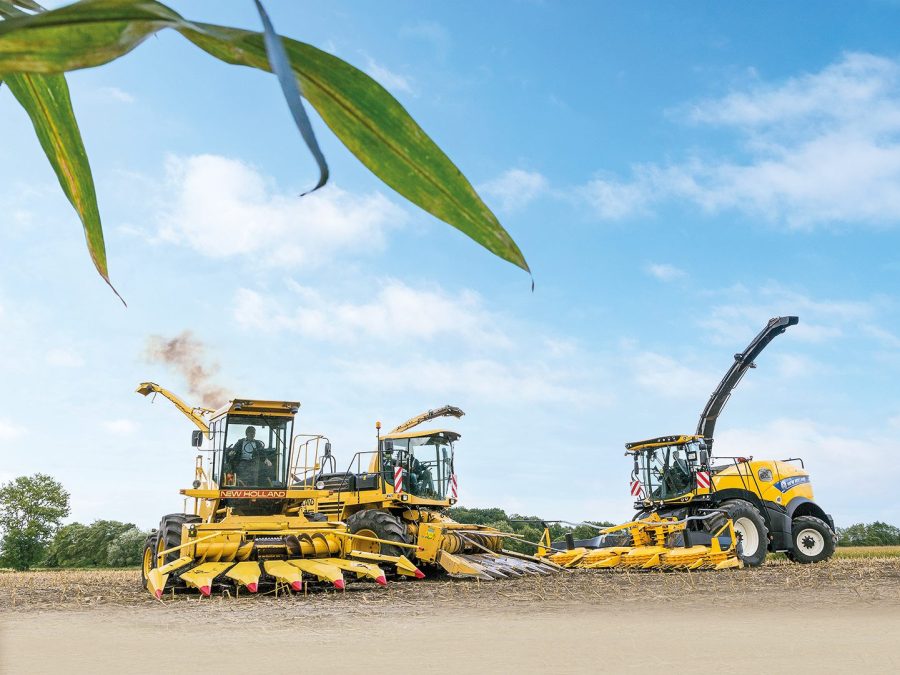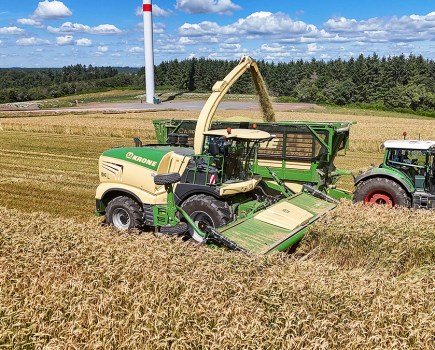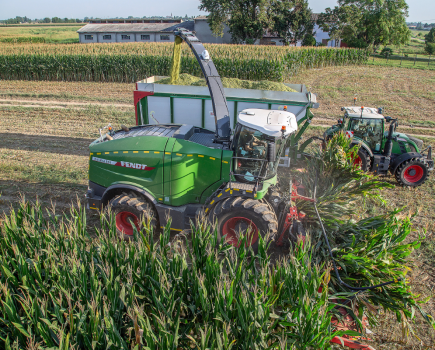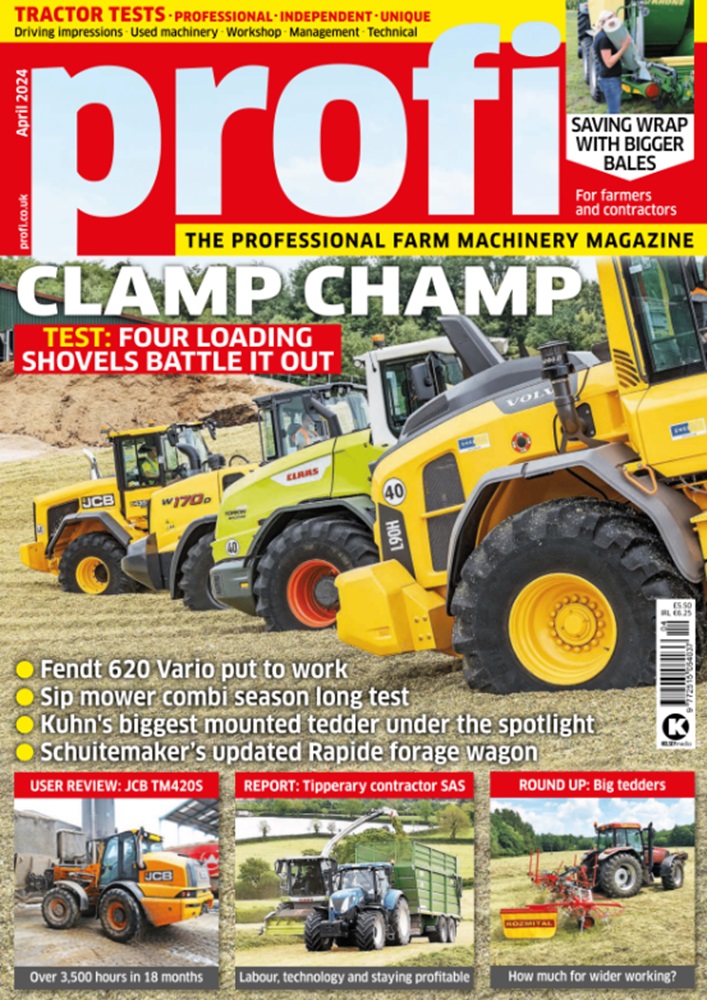REPORT: Two iconic New Holland self-propelleds take on their modern-day successor in our three-forager comparison. Time to examine some chopper evolution.
Last year our German colleagues put on a special forager event to look at just how much New Holland foragers have evolved. From the early 1895, which was produced in 1968, to a fresh out of the box FR780, the five machines set to work clearing a field of maize, with a complete team of equally vintage tractors and trailers also getting in on the action. With this level of hardware available, we took the opportunity to compare three key models: a 1905 model from 1987, the FX375 from 1997 and the most recent FR780 Forage Cruiser, which is the second largest model in the New Holland range.
Row (in)dependent
Let’s start at the beginning, the header. When the New Holland 1905 model was launched, it operated with the Kemper Champion, the first variable-row header on the market, but only as a retrofit solution. For our test, New Holland equipped the 1905 with a chain driven, row dependent six-row header, which was supplied by Claas.
Arriving in the field, the operator had to leave the cabin to fold out the two outer header sections, something that was considered the norm. And even in the early days of the FX375, row-dependent headers were still commonplace. It was not until the second generation FX that Kemper’s row-independent headers
appeared in the New Holland price list. Many FXs that are still used today for chopping maize will have a variable-row Kemper, as it just makes clearing fields that bit easier. But the FX375 in our comparison sticks with the original, a six-row chain-driven 300N6. On the top-of-the-range FX450, New Holland offered an eight-row fixed header.
The state of the art is the row-independent 750BFI header on the FR780, which romps through the maize crop at 7.50m width (10 rows). The eight-row version is available with Kemper’s Stalkbuster stalk chopping option.
For more up-to-date farming news click here and subscribe now to profi and save 47%.






